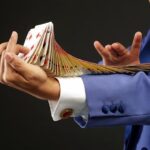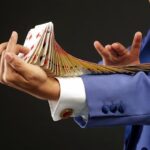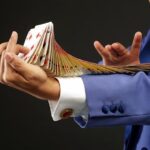In the weeks leading up to the Super Bowl, discussions surrounding this year’s halftime show have become increasingly charged, particularly among conservative factions. At the center of this controversy is Bad Bunny, the Puerto Rican reggaeton artist whose anticipated performance has triggered a wave of backlash from certain conservative circles. Critics argue that Bad Bunny’s music and persona represent a shift away from traditional American values, prompting fears about cultural dilution and the growing influence of Latinx artists in mainstream media. As the Super Bowl approaches, this article delves into the underlying reasons behind the conservative fury, exploring the intersection of race, culture, and the evolving landscape of American entertainment.
Conservative Backlash: Examining Cultural Concerns Behind Bad Bunny’s Super Bowl Performance
The upcoming performance of Bad Bunny at the Super Bowl has ignited a wave of backlash from conservative circles, stemming from what many perceive as a challenge to traditional cultural values. Critics argue that his meteoric rise, coupled with a style that is unapologetically bold and vibrant, represents a departure from conventional norms that have long defined mainstream entertainment. Among the specific causes for concern are:
- Language Barrier: Bad Bunny primarily performs in Spanish, which many conservatives see as a reflection of an increasingly bilingual and multicultural society—something they view with skepticism.
- Promotion of Gender Fluidity: The artist often blurs the lines of gender expression, which clashes with conservative ideals around masculinity and femininity.
- Political Activism: Bad Bunny’s previous statements on social justice issues resonate with a younger, more progressive audience, but are seen as divisive by those who prioritize a more traditional approach to patriotism and values.
Moreover, the spectacle surrounding major events like the Super Bowl has historically catered to a conservative audience that prefers entertainment aligned with long-standing cultural narratives. With Bad Bunny’s performance promising to be a vibrant fusion of reggaeton and pop mechanics, it raises questions about inclusivity and representation in spaces conventionally dominated by conservative figures. This tension highlights a cultural shift that has left some feeling alienated. The anticipation of Bad Bunny’s performance reflects broader societal debates over:
| Concern | Impact |
|---|---|
| Language Usage | Challenges American cultural hegemony |
| Gender Norms | Disrupts traditional gender roles |
| Cultural Representation | Promotes inclusivity and diversity |
The Clash of Values: Why Music Choices Ignite Political Divides
The announcement of Bad Bunny’s upcoming Super Bowl performance has generated significant outrage among certain conservative circles, spotlighting the complex interplay of music and political ideology. For many, music transcends mere entertainment; it serves as a battleground for cultural identity and value systems. The fusion of Latin rhythms and politically charged lyrics in Bad Bunny’s work represents not just a genre shift but a challenge to traditional narratives surrounding American identity. Critics argue that his presence at such a high-profile event undermines what they consider the “American way,” citing concerns over cultural appropriation and the potential for divisive messaging during a highly anticipated national moment.
Those opposing Bad Bunny’s performance often express their discontent through social media campaigns and public statements that reflect broader fears of cultural change. Key points driving this unease include:
- Language Barriers: Lyrics often delivered in Spanish challenge the predominance of English in mainstream platforms.
- Politically Charged Imagery: His artwork and performances frequently critique systemic injustices, provoking discomfort among conservative audiences.
- Cultural Representation: The perceived shift from predominantly Anglo-American talent to diverse forms can create a feeling of alienation.
The intersection of music, identity, and politics presents a revealing tableau concerning how pop culture can fuel ideological divides. As Super Bowl Sunday approaches, the tension surrounding Bad Bunny’s appearance may very well reflect deeper societal concerns about inclusion, representation, and the future of American cultural identity.
Strategies for Dialogue: Bridging the Gap Between Artistic Expression and Political Sentiments
In the lead-up to Bad Bunny’s highly anticipated Super Bowl performance, a notable wave of criticism has emerged from conservative circles. This backlash can be attributed to his unapologetic embrace of cultural identity and social issues that resonate deeply with progressive values. His artistry, often characterized by vibrant expressions of Latinx culture, challenges the mainstream narrative, which many conservatives find threatening. The performance is perceived not just as entertainment but as a potential platform for political sentiments that may diverge from traditional American values. As a result, conservative commentators and political figures are mobilizing their audiences to voice discontent, claiming that such a showcase in a historically significant event undermines a sense of national identity.
In response to the escalating tensions, strategies for dialogue must emphasize the importance of understanding diverse artistic expressions in political contexts. Both artists and audiences can benefit from fostering conversations that highlight the intersectionality of art and activism, which can include:
- Engagement Workshops: Create spaces where fans and detractors can discuss their views on art’s role in society.
- Public Forums: Encourage open discussions that delve into the ways creativity reflects and influences political sentiments.
- Collaborative Art Projects: Promote initiatives that bring together artists with contrasting viewpoints to create works that dialogue across divides.
Through these approaches, there is an opportunity to bridge gaps in understanding, allowing both sides to appreciate the broader implications of integrating art into public discourse, thus transforming anger into productive dialogue.
Insights and Conclusions
In conclusion, the backlash against Bad Bunny’s impending Super Bowl performance is emblematic of broader cultural tensions that reflect the intersection of politics, identity, and entertainment in contemporary America. As conservatives express their outrage, they highlight concerns about representation, cultural appropriation, and the shifting dynamics of mainstream media. This controversy not only underscores the significance of celebrity influence in shaping public discourse but also reveals the deep-seated divisions that continue to characterize American society. As the Super Bowl approaches, it will be crucial to observe how this debate unfolds and whether the performance will serve as a unifying moment or further exacerbate existing fractures within the audience. Ultimately, Bad Bunny’s appearance may not just entertain, but also challenge audiences to grapple with the complexities of cultural identity in a rapidly evolving landscape.









